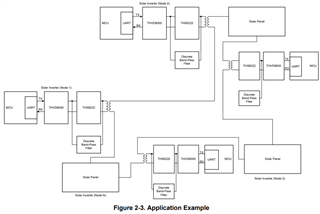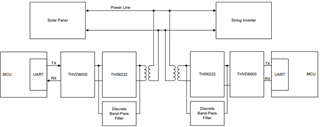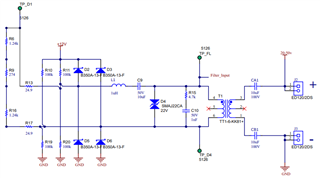Other Parts Discussed in Thread: THVD8010, THVD8000, THS6222
Tool/software:
Hi team,
My customer is evaluating TIDA-010935, and they have the following questions:
1. Does this design support communication of 5 nodes? Do we have application cases?
2. Is it ok to replace THVD8000 with THVD8010 if their data rate is less than 20kbps? Will the transmission distance or number of nodes be affected?
3. The design uses RF transformer to couple signals. Are there any requirements for this transformer? What is worth attention when selecting the transformer?
Thanks a lot for your time!
Best Regards,
Kelly Tian





